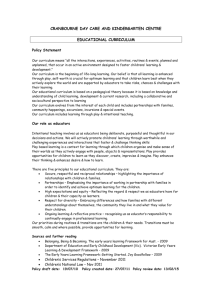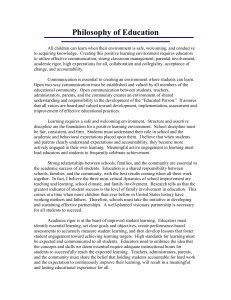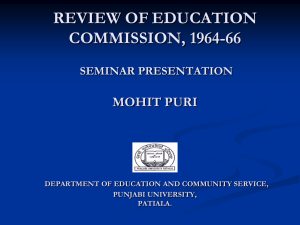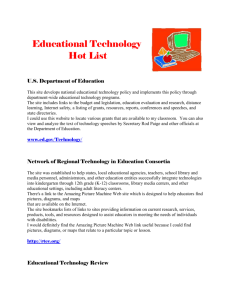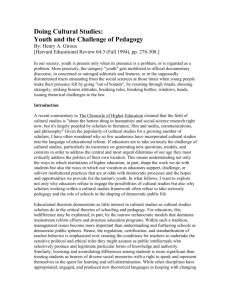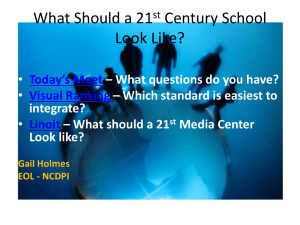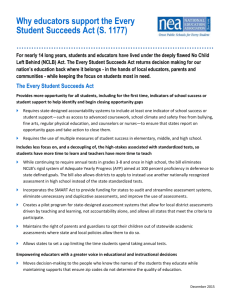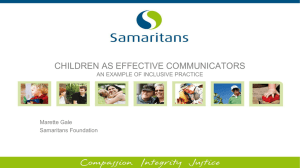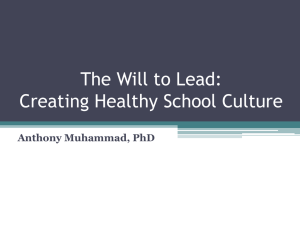Anne Stonehouse presentation - Department of Education and Early
advertisement
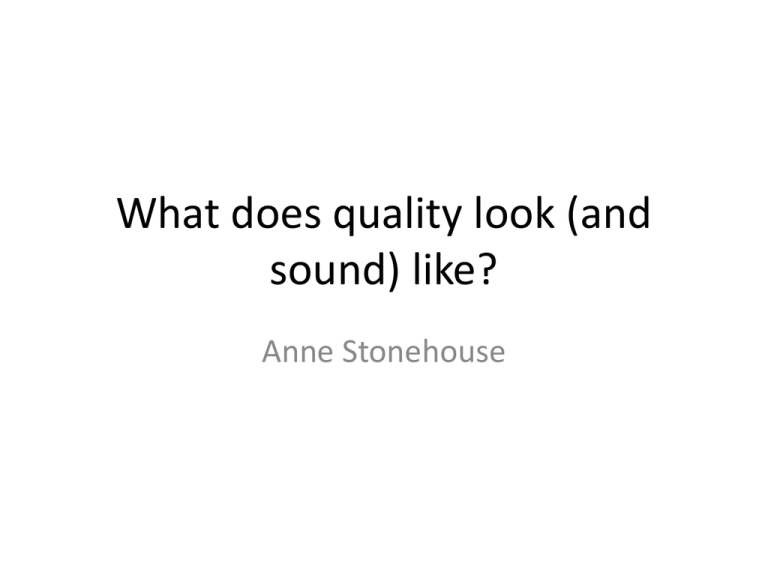
What does quality look (and sound) like? Anne Stonehouse • What’s the first thing you think of in response to the question ‘What does quality look (and sound) like?’ Good quality is about… • • • • • The program or curriculum The physical environment Educators’ relationships with children Relationships between children Relationships and communication with families • Educators’ relationships and interactions – with children, with families -- are what matter the most! Quality is about… educators building a strong positive relationship with each child, and both educators and children ‘using’ that relationship to support children’s learning. In good quality services you can see and hear evidence of… • respect for children • honouring children’s dignity • not ‘doing to’ children but collaborating with them as partners in their own experience. • Good quality means that the educators’ attention is much more on the children than on the activity. What matters is evidence of… starting with children’s interests, abilities and strengths and taking them further. • Simply responding to children’s interests isn’t necessarily evidence of good quality. It’s how educators respond that matters. In good quality services, educators are creative and go beyond the obvious. What matters is understanding that the curriculum or program is … all the interactions, experiences, activities, routines and events, planned and unplanned, that occur in an environment designed to foster young children’s learning and development. (EYLF) A rich environment where there are many things that children can engage with frees educators to build relationships, support learning and have quality interactions. Good quality means… • Relaxed pace and flow – not driven by the clock • Catering for individuals – experience is personalised • Attention to routines – – – – – Arrivals, separations and reunions Eating Resting and sleeping Hand washing Toileting and nappy changing Good quality means… • supporting children’s sense of agency • deep understanding of power of play • evidence of intentionality -- planning and preparation. Physical environment • • • • • • Enough space Furniture and equipment scaled to size Not too busy, not too bland Big spaces divided into smaller spaces Organised ‘Things’ and educators spread out Physical environment • • • • • • • Balance of tidy and messy Soft and comfortable Materials displayed with purpose Interesting things to look at at child height Real things Natural materials Open-ended materials Physical environment • Built-in learning, indoors and outdoors: What would be there for children to engage with if all the toys were taken away? Partnerships with families • • • • Families as sources of information Sense of welcome Empathy Families used to build relationships with children • Continuity taken seriously • Shared decision making • Sharing ‘good news’ Interactions and relationships • • • • • • Each child known really well Individualised, differentiated experiences Responsiveness The dance -- initiate and respond Empathy Respectful image as capable contributors, agents, amazing learners • Educators ‘present’ and tuned in • Working well as an educator is rocket science! • Supporting children’s learning, development and wellbeing requires educators to make many decisions and complex professional judgments. • Educators need to be committed to their work and to get great satisfaction from it. • In early learning services, we do want people wondering around our early childhood care and education services !
